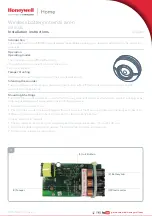
Doc. No.: 103839 Rev. A
jotron.com
Page 60 of 104
9
Initial Configuration
9.1
Short reference for initial configuration
1.
Fill in Own ship (ch. 10.1)
Ship Name
MMSI number
IMO number
Call Sign
GNSS antenna positions (Internal & external)
Type of Vessel
2.
Check GNSS and position:
Internal GNSS signal strength (ref ch. 10.6.4)
Transmitted data: ( Ref ch. 10.6.8)
3.
Configure External Display Interface( ch. 10.6.1.2 )
Ethernet
4.
Configure Display port interface( ch. 10.6.1)
5.
Check External Sensor communication
Indicators (ch. 10.5 ) - shows Sensors detected
Port Monitor (ch. 10.6.1.8 ) – shows RAW data from Sensor 1 to Sensor 3
6.
Check External Display communication ( ch.8.3.2.5 )
7.
Check Communication test (ch. 10.6.2 and 10.6.6)
8.
Fill in Voyage Settings (Ch. 7.3)
Navigational status
Destination
ETA
Draught
Cargo Category
9.
Check reception of ship in ship list – normal operation (ch. 7.2.6)
9.2
Not all ships carry AIS
It is important to remember that not all ships carry AIS, in particular leisure crafts, fishing boats, warships and
some coastal shore stations including Vessel Traffic Service Centers.
9.3
Use of AIS in collision avoidance
As an anti-collision aid the AIS has some advantages over radar:
Capable of instant presentation of target course alternations.
Not subject to target swap.
Not subject to target loss in clutter.
Not subject to target loss due to fast manoeuvres.
Able to detect ships within VHF/FM coverage.
Содержание 103660
Страница 1: ...Tron AIS TR 8000 MkII AIS Class A Inland AIS Transponder Operator and Installation Manual...
Страница 2: ......
Страница 103: ......
















































